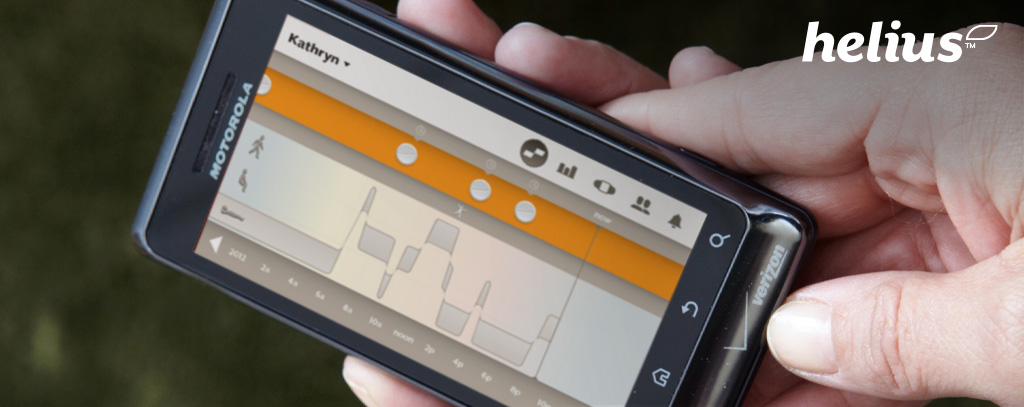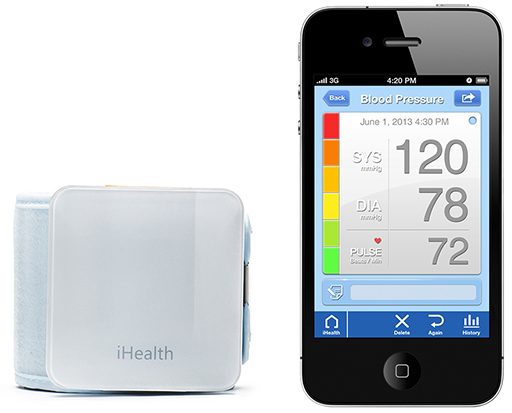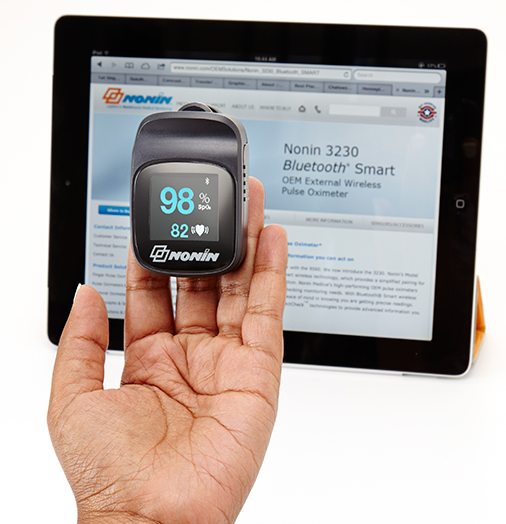Bluetooth Smart is supporting home healthcare
How Bluetooth Smart is accelerating growth in the home healthcare market. By Chuck Sabin, Director of Product Management & Planning, Bluetooth SIG.
In the UK and across the world there are growing concerns that the surge in complex chronic illnesses, such as obesity and diabetes, coupled with an ageing population, is leading to the current health care system facing a crisis. There have been calls for a move away from the current system based primarily on acute care in hospitals, to a system in which out of hospital care has a more central role. As well as easing the pressure on medical resources, monitoring patients from home can help improve their experience. Patients don’t have to regularly travel to doctor or hospital appointments, which can be inconvenient and, for those who are chronically ill, could actually exacerbate their condition. And by continually receiving data from patients at home, doctors can recommend treatment based on more reliable data.
But in order to make this an effective alternative, outpatients need to have access to inexpensive, high quality and compact devices that they can easily wear throughout the day or use intermittently in a home environment. And they need to be able to send the data they collect from those devices directly to health professionals so they can monitor and better diagnose conditions remotely.
Bluetooth technology is providing a solution to this problem. When Bluetooth 4.0 specification was released in 2010, it conceived Bluetooth Smart technology - now the fastest adopted wireless technology in history. Bluetooth Smart is special for two reasons; its ultra-low power consumption and its ability to connect devices directly to local applications on phones, tablets and PCs. This intelligent and power-friendly version of Bluetooth has opened up the possibilities for a whole new plethora of ‘appcessories’; compact devices that can run off a small battery for long periods and send data to applications that turn it into useful information for the end-user. It’s this information via the application that makes the connected device smart. With all major smartphone operating systems now offering native Bluetooth Smart support the standard continues to go from strength to strength.
Perhaps the most popular appcessories that Bluetooth Smart has enabled to date are those that allow users to monitor health and fitness, allowing consumers to measure everything from heart rate to pace and send it directly to a smartphone or tablet. These same principles can be directly applied to monitoring medical issues, allowing patients to collect data and send it to the cloud safely and effectively using the devices they already own - smartphones and tablets and PCs. With consumers familiar with monitoring their fitness it is not a big leap to monitor a condition. From blood pressure cuffs to weight scales and glucose monitors Bluetooth Smart enabled medical devices are beginning to come to market to meet that need. By quickly, easily and securely capturing and recording data on a condition and sending it directly to a doctor, these devices are enabling both patients and physicians.
Meeting the needs of the medical industry
Whether it’s being used in the hospital, or at home, for any wireless medical device safety and reliability are key. Today a plethora of wireless technologies, including WiFi and Bluetooth, are used in hospitals and other clinics. But in the home-health space Bluetooth is beginning to become the technology of choice. IHS predicts that Bluetooth and Bluetooth Smart Ready health and wellness device shipments are expected to grow from 1.4m devices in 2013 to 2.1m devices in 2018. So why is Bluetooth being selected for home-health devices, and what do developers need to consider when building a medical device?

Figure 1 - Described as a ‘Digital Health Feedback System’, Helius provides both wearable and ingestible sensors that work together to capture the body’s physiologic responses such as heart rate. It then sends this information to a user’s mobile device using Bluetooth Smart. This presents the data in context and can be sent to the cloud for caregivers and doctors to review and analyse.
The first reason for Bluetooth’s growth in personal health devices is the need for safe medical equipment that ensures data privacy. Data collected by home healthcare devices can be vulnerable to threats such as viruses and worms, because the data is collected, analysed and transmitted by internet applications. In both the US and across Europe, when taking a medical device to market you must follow regulations that demonstrate that it is safe for its intended use and within both markets there are generally three risk classes. The processes a manufacturer must undertake to receive approval are roughly the same in Europe as they are in the US, with certification coming from the US Food and Drug Association and Medical Device Directive (MDD) respectively. It is the stated intended purpose of the device, assigned by the manufacturer, which determines the class in which a device is categorised.
- Class I: Generally regarded as low risk. These can be put on the market with just a notification to the FDA/MDD. Examples include a tongue depressor or a thermometer.
- Class II: Generally regarded as medium risk. These need to have clearance by the FDA/MDD before they’re marketed. Examples include a blood pressure monitor or a glucometer.
- Class III: Generally regarded as high risk. These need to have pre-market approval from the FDA/MDD which involves submitting extensive data for safety checks. Examples include implanted defibrillators or pacemakers.
Adding to the complexity of compliance concerns is the fact that there is not a consistent approach to privacy worldwide. For example, the United States has HIPAA while Europe has its own set of privacy and security regulations. This is a sensitive area for device manufacturers because with this type of lifestyle information, devices could be created leading to more effective therapeutic adjustments.
Figure 2 - More additions to the line of products in the Remote Patient Monitoring Networks market appear daily, such as this smart wearable solution. The different devices use Bluetooth Smart to send users continuous information including heart, blood pressure, ECG and health monitoring data straight to their handheld devices. Like the Helius, all of the collected data from the device can be shared with doctors and cardiologists.
Bluetooth technology uses an extremely secure encryption algorithm to protect data during transmission from one device to another, whatever class of device you’re creating. While no wireless technology is 100 per cent safe, it is among the most secure technologies available today. The Continua Health Alliance, the industry coalition charged with establishing a system of interoperable personal telehealth solutions, chose to include Bluetooth Smart as part of its Design Guidelines after comparing it against other wireless technologies in a rigorous 10 month review process. Device manufacturers aimed at the global market need to maintain a flexible set of protocols and a system that combines privacy and device utility. Bluetooth Smart offers the best balance.
Interference issues
While wireless coexistence and interference are perhaps larger concerns in a medical environment they can also cause concerns over security in the home. One of the main plus points for Bluetooth and Bluetooth Smart is that they are designed to cope with environments where interference is likely on the 2.4GHz band. This is achieved through ‘adaptive frequency hopping’ built into the Bluetooth architecture. Rather than sending data over just one channel of the 2.4GHz band, Bluetooth is designed to ‘hop’ between dozens of channels in a pseudo-random fashion. Not only can Bluetooth hop at the astounding rate of 1600 times per second, it can also adapt; dropping channels that are in use by other devices. This means that data gets from point A to point B in environments where other wireless technologies are in use, but it also has the additional security benefit of making it very difficult to predict over which channel the data will be transmitted.
Alongside meeting industry regulations for security Bluetooth Smart offers two things that are vital to developers. Firstly it’s a standards based technology, allowing compatibility with the many source and peripheral devices on the market. And secondly, it has the flexibility for developers to build services specific to their business without having to wait for the industry to catch up.
As Bluetooth Smart is based on Generic Attribute Profile (GATT), developers can build devices that speak at a GATT level and then layer on their own custom profile. The GATT architecture makes it easy to both create and implement new profiles, which contributes to the rapid growth of applications and embedded devices supporting them. Alternatively the Bluetooth Special Interest Group (SIG) has already released several profiles for building Bluetooth Smart into medical devices, including heart rate monitors and thermometers, and more are always on the way. These common profiles are beneficial when the aim is to share the profile with the community, including other companies.
There are a number of advantages to the propriety approach. Generally speaking it will reduce time to market as it’s no longer necessary to wait for separate operating systems to implement a profile, cutting through the extensive verification process. The other reason is that when building your own profile, you have increased control of the communication parameters and can ensure that the device is marketed for its intended use. Currently it’s a best of both worlds scenario: you can have ubiquitous deployment via a common standard or you can have market protection and increased control through proprietary profiles.
Figure 3 - This finger pulse monitor sends the data gathered from the sensor via Bluetooth Smart to a smartphone app. It provides a great example of the low power benefits of the technology as it allows for up to 2,200 spot checks on just two AAA batteries.
For those looking to get started with building a Bluetooth Smart enabled medical device the Bluetooth Smart Starter Kit offers a comprehensive training package which includes hands-on labs and sample source code to get you up and running fast. Developers can also access a range of resources, including additional tools, training videos, webinars and whitepapers on the Bluetooth SIG developer website.
One of the benefits of Bluetooth technology is that it provides the ability for solution providers to aggregate multiple data points to provide more informed services to the user. Imagine an asthmatic patient suffers from attacks whenever they come into contact with high volumes of tree pollen. Soon, that same patient might have a wearable sensor that is connected to the cloud, so it knows they have a condition as it can access their electronic health record. The same sensor will have access to today’s weather reports including pollen counts, as well as the patient’s route to work. On any given day, the sensor might communicate with the web and find out that there’s a weather system coming in that will blow high levels of pollen into the patient’s route to work. This would in turn trigger an alert telling the patient to adjust their route to avoid having an attack. For the asthma patient, the idea of not needing to use an inhaler is life-changing. While this scenario may seem farfetched, it is actually a very real possibility because of Bluetooth Smart.
Future scenarios such as this one are opportunities waiting to be taken by companies developing health monitoring and medical devices with Bluetooth. There have been calls to make regulation easier so that the industry can get there faster, but there are good reasons why there is rigorous regulation in place. While there may be a temptation to say that innovation is being stifled through over regulating, the truth is that while many of these devices carry with them great benefits, they also carry great risks if companies do not carry out the necessary safety procedures. Once those risks are observed and dealt with, there are some huge benefits for the whole industry.




